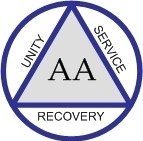A.A. Bridging the Gap Program
The Bridging the Gap Program, or BTG, connects the new member being discharged from a facility to A.A. in their community. You are being asked to be that connection, what is called a Temporary Contact.
When a new, soon-to-be discharged member contacts us, we match that person to a Temporary Contact in the community where they will be living. If you have volunteered for this type of service, we will call you, get the okay and then send you their contact information.
Your job is simple. You contact the new A.A. member and arrange to take them to an A.A. meeting, preferably within 24–48 hours of their discharge. Your commitment is taking them to as many as six meetings.
During this time, you help them become acquainted, get phone numbers and perhaps locate a sponsor and a home group. You introduce them to others in A.A. so they have a broad, healthy base, then you are available to serve as a Temporary Contact for another person.
Please note: It is not intended that you become their sponsor, even temporarily. It is best if the word “sponsor” is not used to describe this type of service. The term Temporary Contact is preferred.
If you are willing to be the hand of A.A. When a member from a facility reaches out for help, complete the Temporary Contact Form and give it to your G.S.R., or your BTG coordinator, Corrections or Treatment chairperson
Volunteers need to adhere to the rules facilities have regarding contact with residents, both while they are in the facility and after they are discharged. The BTG coordinator can provide the necessary information for each facility.
(NOTE: Clicking on the “Temporary Contact Form” hyperlink above will automatically download an Adobe Acrobat copy to your computer.)
Suggestions for the Temporary Contact
1. Remember you may be the first outside member of A.A. the contact meets. As such, you are representing all of us. It is important to be relaxed, friendly and interested.
2. Keep the general conversation related to recovery. Avoid discussing the new member’s discharge. We have no opinion on outside issues.
3. Take time to introduce the new person to as many A.A. members as possible. Do not, however, push your contact. Some people are very shy.
4. Invite them to the “meeting after the meeting” if there is one. Show them we are happy, joyous and free and that sobriety can be enjoyable.
5. Your commitment is usually finished after attending six meetings or as soon as a sponsor has been located. Use good recovery related judgment about when to end the relationship.
6. Make sure the newly released A.A. Member receives meeting schedules, phone numbers and A.A. literature.
7. Encourage the new member to attend meetings as often as possible, to find a home group and to get a sponsor as soon as possible. Let them know even a temporary sponsor now would be acceptable.
8. Share your experience, strength and hope with the newly discharged member, just as you would anyone else new to A.A. in your community.
9. Be familiar with the suggestions of the BTG program contained in the pamphlet. We don’t offer or imply any other service and assistance unless we personally want to provide it.
10. Please respect the complete anonymity of the new member.
